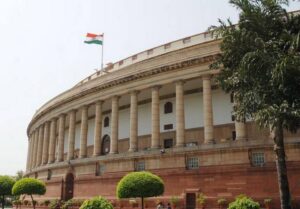President
According to the Constitution of India, the President holds the formal Executive power of the Union government. On paper, the President is given widespread Executive, Legislative, Judicial, and Emergency powers. In reality, in a parliamentary system, the President exercises such powers only as per the advice of the Council of Ministers. The Prime Minister and the Council of Ministers are the real Executive since they are supported by the Lok Sabha majority.
There is no direct election by the people for the selection of the President. The President is indirectly elected for a term of 5 years. Thus, the President is not elected by the citizens of India, instead, they are elected by the MLAs (Members of Legislative Assembly) and MPs (Members of Parliament). This election takes place in accordance with the principle of proportional representation with a single transferable vote. To qualify for the position of President, one has to be a citizen of India and a minimum of 35 years old. They should also have qualified for election as a member of the Lok Sabha. Only the Parliament has the power to remove the President by following the procedure for impeachment.
The supreme commander of the defense forces of India is the President. The President has the power to appoint all the major heads of the different institutions of the government, such as
- The appointment of the Chief Justice of India
- The Judges of the Supreme Court and the High Courts of the states
- The Governors of the states
- The Election Commissioners
- Ambassadors to other countries, etc.
